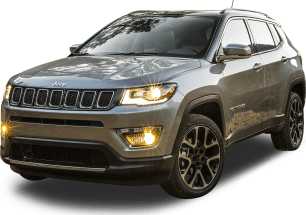While most of the fun happens in the second row of the Lexus LM, there is a lot to like in the front compartment.
The dash is dominated by a large touchscreen that houses Lexus’ latest multimedia setup. The logical menu and uncomplicated sub-menus ensure this is an easy system to navigate. Speaking of, the in-built sat-nav is one of the better systems I have experienced.
Comfort isn’t just the domain of the second row - the driver’s seat is very supportive and comfortable, with power adjustment.
There’s plenty of glass including a smaller front quarter window that helps eliminate front blind spots, so forward visibility is exceptional. Rearward visibility is aided by the digital rear-view mirror that is designed to ensure privacy for second and third-row occupants. You don’t want the chauffeur spying on you while you’re sleeping, do you?
The other big tick for me is the driving position. Other people movers, namely the Hyundai Staria and Mercedes-Benz EQV, have very low window lines and it leaves you with a feeling of sitting on the car, rather than in it. I am sure it helps with extra light and it probably makes it easier for kids to see out of, but from a driving perspective, I find it a little disconcerting.
But the LM has flipped that. The front compartment is designed in such a way that it feels like a cockpit that you’re ensconced in. This helps the driver feel more connected with the car, and in the LM it feels like you’re sitting in the driver’s seat of a sporty sedan, not a five-metre bus. Very well done, Lexus.
And now to the main event - the second row.
Where to begin. Let’s start with space. Because there is so much of it. Unsurprisingly given the seating layout, there is an unending amount of head, leg, knee, bum, shoulder and whatever-else room. I can’t imagine anyone complaining about space back there.
Also, getting in and out is a breeze thanks to the sliding power doors on both sides. These can be opened from the front seat, and via several buttons in the rear.
Those captain’s seats are plush. Not quite Benz S-Class plush, but still.
They are adjustable six ways - power adjustable, of course - and they’re heated and ventilated. They recline almost flat, too, if you need a nap on the way to the country estate. And while you do that you can look up through the split sunroof, or close the shade a number of ways.
Is there a massage function? Of course there is a massage function. And it’s not bad. You can choose two settings - weak and firm.
Adding to the feeling of a business class airline seat, there is a fold-out table in the armrest, although it’s a smallish one. And there is dual-zone climate control in the rear.
There is a roof-mounted control panel for things like climate, sunshades and sunroof blinds, but much of this can also be controlled by the Apple iPhone-like devices clipped into both rear seats. These are closer to the seats, so it is easier to access than the roof.
Another function in the device is the Climate Concierge that features different modes - Dream, Relax, Focus, Energise. Depending on which one you choose, it alters the seat settings, massage, climate and lights to suit.
I love the massively wide side windows that are tinted (or privacy glass), too.
Other amenities include map pockets, knee and roof-mounted air vents and a 14.0-inch display screen that retracts from the roof and connects to an HDMI cable, allowing you to watch whatever you want.
The third row is not as appealing as the second. It is technically a three-person row, but the width and the fact that it has a sizeable gap in the centre suggests that this is best thought of as a six-seater van.
The seats are not as plush of course, so you might not want to spend too much time in that row unless you are a small child. But you do get USB-C ports, cupholders, air vents, lights, sunglasses holder, power side shades and grab handles.
Getting in and out of the third row can take a while. It’s all power adjustable, so you don’t have to lift anything heavy - but it takes a while for the second row seats to move forward and up.
With all seats in place the cargo space is limited. In fact, it’s just 110 litres.
That’s similar to what you get in a seven-seat SUV. But it did fit all our overnight luggage easily.
Drop the rear row and that expands to a maximum of 1191 litres in the 350h or 752 litres in the 500h.
All grades have a space-saver spare wheel.






